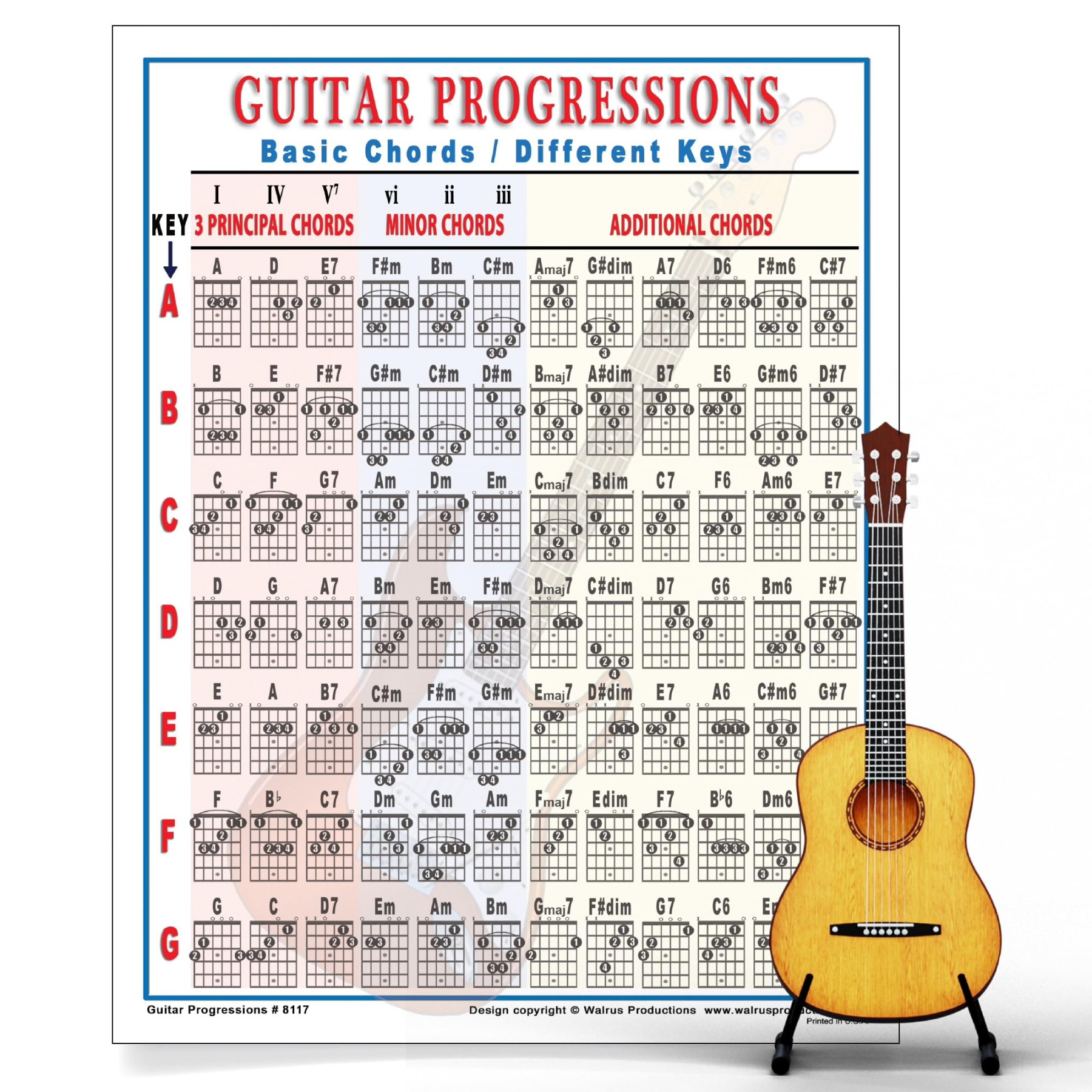Acoustic Guitar Chord Progressions: Your Guide to Sweet Sounds
So, you’ve got your acoustic guitar, you’re strumming away, and you’re ready to make some beautiful music. But where do you start? Chord progressions, my friend, are the backbone of most songs. They’re the series of chords that play together, creating the harmony and feel of your tunes. And when it comes to acoustic guitar, the right progression can make your songs sound warm, inviting, and downright magical.
Let’s dive into some common and effective chord progressions that work wonders on an acoustic guitar. We’ll keep it simple and easy to understand, even if you’re just starting out.
Understanding the Basics

Before we jump into specific progressions, let’s touch on some fundamentals. Chords are built from scales, and knowing a little about scales can go a long way. The most common scale in Western music is the major scale, and from it, we derive the chords we use in progressions.
The basic major scale has seven notes, and each note corresponds to a chord. These chords are usually numbered using Roman numerals: I, ii, iii, IV, V, vi, and vii°. For example, in the key of C major, these chords would be C, Dm, Em, F, G, Am, and Bdim.
Common Acoustic Chord Progressions
Now, let’s get into some progressions you can start using right away.
The Classic I-IV-V Progression
This is the bread and butter of countless songs, especially in genres like folk, country, and rock. It’s simple, strong, and sounds great on an acoustic guitar.
In the key of G, this would be G, C, and D.
This progression has a very “resolving” feel, meaning it naturally wants to return to the I chord. It’s perfect for creating a sense of completion.
The Heartfelt I-vi-IV-V Progression
This progression adds a touch of melancholy and depth. It’s incredibly popular in pop and acoustic ballads.
In the key of C, it would be C, Am, F, and G.
The vi chord (Am in the key of C) adds a subtle emotional twist that makes this progression so captivating.
The Bluesy I-IV-V with 7ths
Want to add a little bluesy flavor to your acoustic playing? Try adding 7th chords to the I, IV, and V.
In the key of A, it would be A7, D7, and E7.
The 7th chords add a bit of grit and soul, giving your acoustic playing a bluesy edge.
The Simple I-V-vi-IV Progression
This is another extremely popular progression that is used in many modern songs. It has a great feel and is easy to play.
In the key of C, it would be C, G, Am and F.
This progression is simple, but very effective for many different styles of music.
Adding Minor Chords for Depth
Don’t be afraid to experiment with minor chords. They can add a lot of emotion and depth to your progressions.
Try adding a ii or iii chord to your progressions. For example, in the key of G, you could try G-C-D-Em or G-Am-D-G.
Tips for Acoustic Guitar Progressions
Keep it simple: Especially when starting, focus on simple progressions that sound good.
Conclusion
Acoustic guitar chord progressions are the heart and soul of countless songs. By understanding the basics and experimenting with different progressions, you can unlock a world of musical possibilities. Don’t be afraid to try new things and find what sounds good to you. Remember, there are no hard and fast rules, and the best progressions are often the ones that come from your own creativity. So, pick up your guitar, start strumming, and let your musical journey begin. With practice and a little experimentation, you’ll be creating beautiful acoustic melodies in no time.

